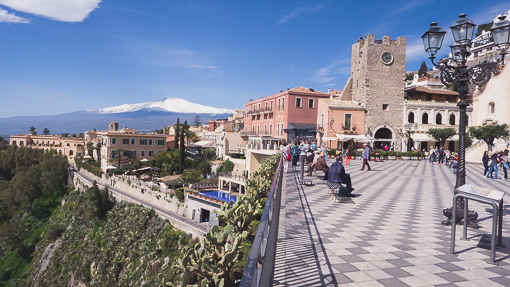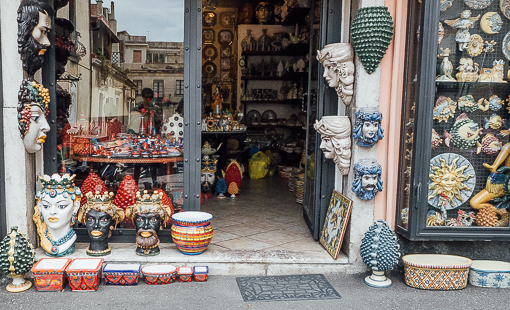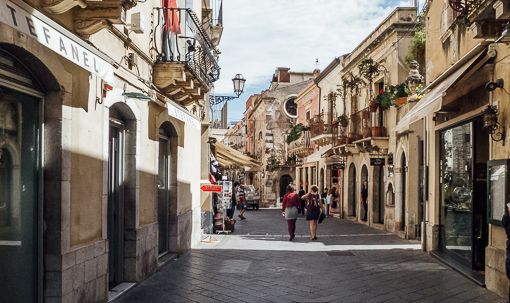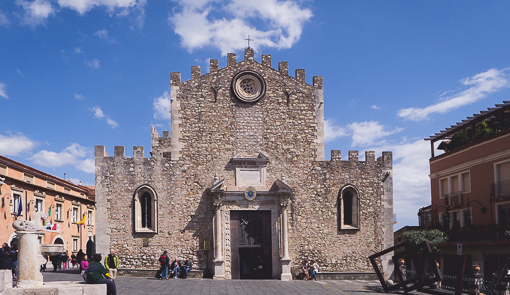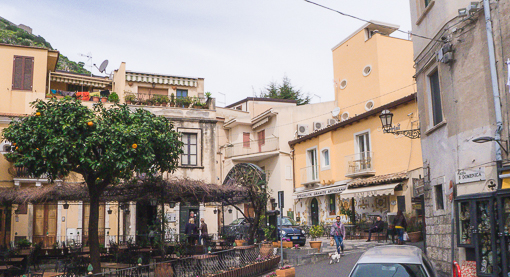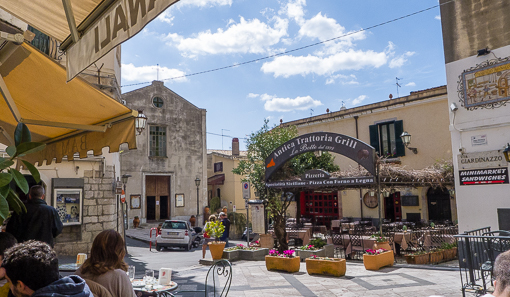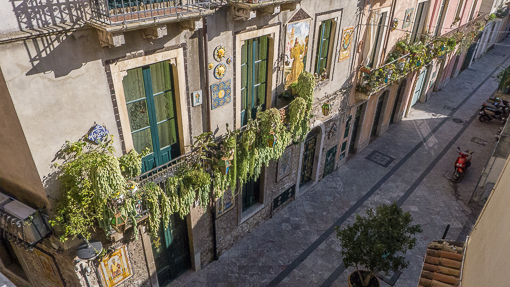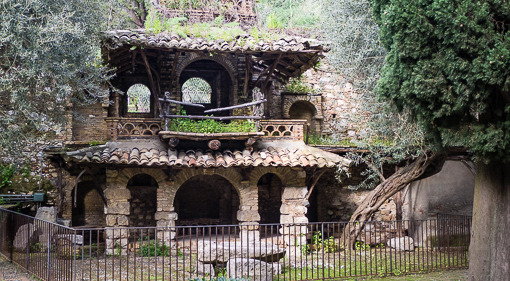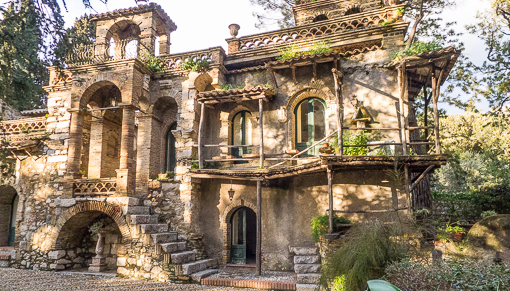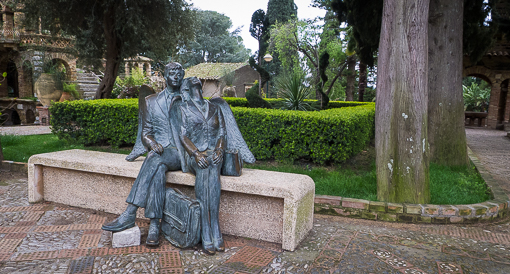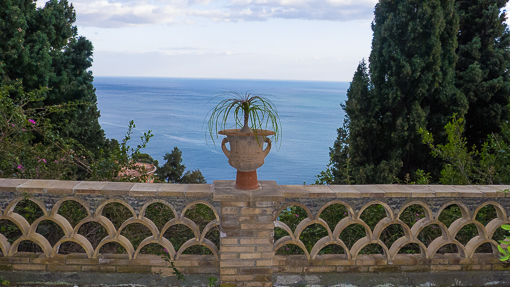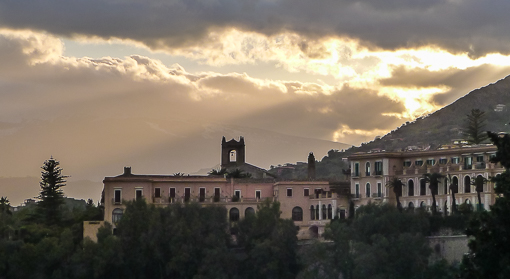Towards the end of our trip in Sicily, we spent a night in Catania before catching an early morning flight home. Relative to Taormina or Siracusa (including Ortigia), Catania is a much bigger urbanized city and looked a bit gray and tired. We wandered around looking for a sushi restaurant near the port and found this point of interest (as noted in our guidebook), Palazzo Biscari, quite accidentally.

The palace is accessed through a large portal facing via Museo Biscari. It leads to an inner courtyard, which features a large double staircase. On either side of the courtyard, there are apartments where members of the Biscari family reside, as well as the offices of the Department of Culture of the Municipality of Catania.

The lintels on either sides of the staircase are richly decorated with cherubs.

Like typical historical feudal homes, the walls are covered with paintings of members of the family going back generations, and interestingly also painted maps of the land owned by the family.

On that evening, it happens to be tango night !
The 17th century ballroom was turned into a milonga. We suspected that they began the evening with lessons and demonstration. Judging by the stalls and racks near the entrance, we could have rented clothes and shoes and partake in the dancing if we were interested.

Instead, we met a young architecture student who was volunteering to give a brief explanation of the palazzo (while his female friend was tango-ing with another guy). He was eager to practice his English which was very good.
The floor was covered by wooden planks, protecting whatever that is underneath it from the kicking and dragging involved in tango. May be it is marble in which case it may be too slippery.

Palazzo Biscari was constructed after the 1693 earthquake on its fifteenth century foundations which was spared by an earthquake. The initial phase of construction was commissioned by the 4th Prince of Biscari, and concluded by Ignatius Paterno’ Castello, the 5th Prince of Biscari who helped the palace acquired fame as a cultural center. In 1758 the prince inaugurated a museum that displayed his precious archaeological collections.

Apparently the palazzo is decorated in the late baroque style of Rococo (18th century), with a complex decoration of mirrors, stuccoes and frescoes. Our guide remarked that the Rococo style was on its way out when the palazzo was constructed since Sicily is in the countryside far away from Florence or Rome. The heart of the palace is formed by its halls, conscientiously restored after the 1991 earthquake. The paintings and frescoes were also restored to their original status.

The small dome, situated above the center of the ballroom, has a frescoe depicting the glories of the Paternò Castello di Biscari family. It is for use by the orchestra, and accessible through a staircase decorated in stucco within the gallery facing the sea.

While the organizer of the dance used a Macbook to provide the music, they seem to be observing the tradition of the milonga regarding choice and exchange of partners. Some dancers came alone and found partners of similar skill level on the sides of the floor.

According to their website, “the Biscari palace is composed by seven hundred rooms, it is located in the old quarter of Catania behind the popular down town area, overlooking the port on the famous marina arches, where trains still pass. Up until the 1920’s, the ocean water reached the precipitous bastions”. The external balcony which would have overlooked the sea is richly decorated with a high relief that symbolises abundance, fertility, prosperity and wisdom.

In a room between the main hall and the windows there is a staircase that raises and folds like a cloud. We believe this staircase leads to the orchestra area above the ballroom.

The palazzo can be rented out for weddings and some of the rooms are available for use in connection with the event. This reminds us of the Cheong Fatt Tze Mansion (click here to see the post) we visited in Georgetown, Penang, the abode of another rich and powerful person from the past which has been converted for cultural, touristic, or entertainment purposes.









































































 These provole must have been smoked.
These provole must have been smoked.




























































































